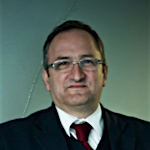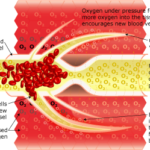by Dr Max Volino
Overlooked For Healing and Restoring Mental Health
Patients with neurological and psychological conditions are forced to arrange hyperbaric oxygen treatment that the government will not provide.
Oxygen and the Brain: The Journey of Our Lifetime by Professor Philip B. James

What rings loud and clear from every page of this book is not only Oxygen’s importance to the brain, but its fundamental influence upon us – the protective nature of Oxygen, the healing potency of Oxygen, the restorative capacity of Oxygen and the reviving strength of Oxygen. It is about understanding our elementary relationship with that most elemental of elements.
What also comes across is James’ frustration with the medical establishment and their portrayal of such a benign benefactor as Oxygen as a noxious contagion to be feared and disparaged.
In 1664, Dr. Nathaniel Henshaw published his seminal work ‘Aero-Chalinos’ and he is considered the father of Hypo- and Hyper-baric treatment. He was a member of the Royal Society and right at the vanguard of what these days would be called ‘emerging sciences’.
Like many great ideas, his was a simple one: if some types of air are better for you than others, maybe more of the good air would be even better, in fact, medicinal.

His method was unconventional and the technologies employed, diverse: Drebbel had just invented the diving bell, 1620, and Boyle and Hooke, both fellow members of the Royal Society, had just published the gas laws, 1662, and laws of elasticity, 1660, respectively. These seminal works were necessary precursors for Henshaw’s ‘domicillium’ a pressurised living room or chamber. But the Age of Enlightenment to an elite few was all very unfamiliar to a society still emerging from the Dark Ages.
Henshaw knew that such avant-garde science would be alarming to some, threatening to others and certainly unwelcome to the scientific establishment of the time. He knew his detractors would be legion and their judgment punitive. He wrote in his dedication,
“For as the novelty of so unexpected a method, as I here propose, will undoubtedly expose it to the calumny of such, who (rather than give themselves the trouble of examining the truth of it, being betimes persuaded, that they already know as much as is to be learnt) will soon condemn it both of folly and innovation.”7
Henshaw’s chamber worked with compressed air – Oxygen was not discovered by Priestly until 1770. And this is where James picks up the story. James painstakingly and methodically presents the evidence in favour of greater therapeutic use of Oxygen, from Priestley’s own work, through the first appearance of the subject in the Lancet, to the astonishing, new research into neuro-genesis, gene expression and our understanding of disease, indeed our current emerging sciences. He meticulously examines the counter claims and goes on precisely and systematically to dismantle them with the counter evidence.

James has assembled the accumulated expertise, wisdom and published academic research from a variety of sources and disciplines; in fact all that is currently, known on the therapeutic use of Oxygen and pressure in the intervening three and a half centuries. This makes the book information dense; in fact, it could really be several books; a biography of Haldane, the history of the Multiple Sclerosis self-help movement, as well as a chronicle of the importance of Oxygen to name three. Nevertheless, all the information is required to piece the puzzle together
Sadly, like Henshaw’s contemporaries, some in medicine today will find this book alarming, not least because its truths are so obvious, so plain and so striking, yet many appear ignorant of them. Others may find it threatening; their doctor’s oath Primum non nocere, first do no harm, challenged? the withholding of a beneficial treatment, negligent? It will make uncomfortable reading.
350 year later James would have every right to feel that little has changed with regard to refutation of Oxygen as a treatment modality. Recent studies have shown its effectiveness in the treatment of neurological and psychological conditions, including Multiple Sclerosis1, Fibromyalgia2, Stroke3, PTSD, TBI4, Autism5 as well as in the recovery from the effects of drug addiction6 yet the NHS are reluctant to provide this treatment. Unfortunately it appears that times change but people don’t and Henshaw’s fears are still relevant today.
James’ ‘misfortune’ seems to be that he was the right man in the right place at the right time. What was his ‘penicillin’ moment, when a brain section was left on his desk, has not worked out that way – yet. But whereas Fleming made a discovery that took a dozen or so years for its time to be ripe, James’ breakthrough requires something altogether more complex and profound to be accepted – a paradigm shift. And they take time – what feels like geological time. After more than 30 years since his landmark paper on fat embolism was published in the Lancet8, the establishment thinking has remained frozen – petrified. The Russian-British philosopher, Isaiah Berlin, stated that “Few new truths have ever won their way against the resistance of established ideas save by being overstated”9 and that is not James’ style. By disposition, character and nature he presents the arguments in a balanced and even-handed way.
Ideas can also triumph by revolution and James’ people-led uprising has already empowered Multiple Sclerosis patients to take control of the means of treatment themselves. And after more than 30 years and millions of treatments, it is the patients that live in an Age of Enlightenment and the Medical profession that seems stuck in the Dark Ages.
© Dr. M. Volino May 2017
- Perrins, D J D and James, P B, Long-term hyperbaric oxygenation retards progression in multiple sclerosis patients, IJNN 2005 ; 2 (1): 45 – 48
- Efrati, S et al, Hyperbaric Oxygen Therapy Can Diminish Fibromyalgia Syndrome – Prospective Clinical Trial PLOS ONE 10.1371, May 2015
- Efrati, S et al, Hyperbaric Oxygen Induces Late Neuroplasticity in PostStroke Patients – Randomized, Prospective Trial, PLOS ONE January 2013 Volume 8 Issue 1
- Harch, P G et al, A Phase I Study of Low-Pressure Hyperbaric Oxygen Therapy for Blast-Induced Post-Concussion Syndrome and Post-Traumatic Stress Disorder, JOURNAL OF NEUROTRAUMA 29:168–185 ( January 1, 2012)
- Rossignol, D A et al, Hyperbaric treatment for children with autism: a multicenter, randomized, double-blind, controlled trial, BMC Pediatrics 2009, 9:21
Nicoara, D et al, Hyperbaric Oxygen Treatment Supresses Withdrawal Signs in Morphine-Dependent Mice, Brain Research 1648, (2016) 434 – 437
Book available at Amazon

I am attending the Samson hyperbaric oxygen centre in Guildford and last September I bought a 10 litre oxygen concentrator from Dr Volino. I am interested in buying “Oxygen and the Brain”. Cyril at the Centre told me that
Dr James is writing an edition that is for non medical readers, is this so and how soon do you expect it to be published?
I was diagnosed with lymphoma in 2013, stage 4 and have NOT gone down the chemotherapy route. Recently I have been diagnosed with small vessel disease in the brain so I am very interested in buying this book.